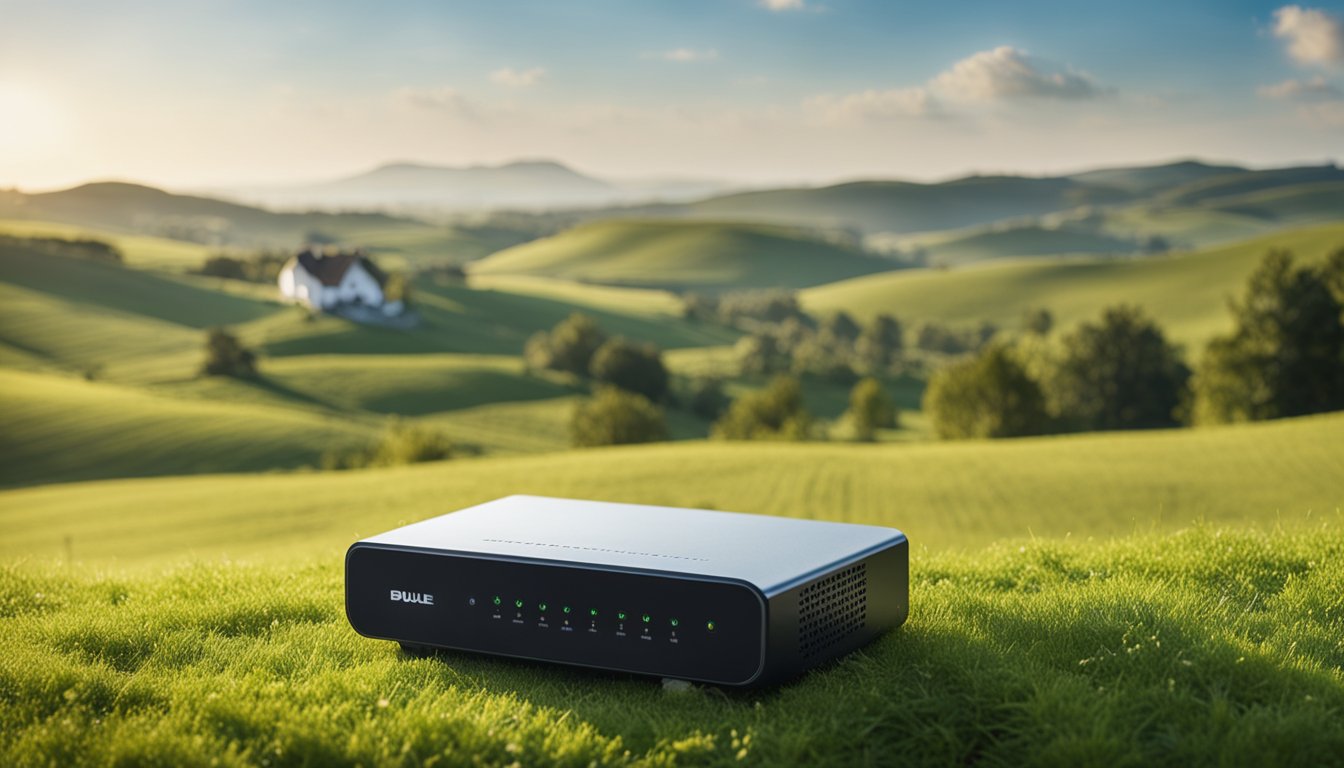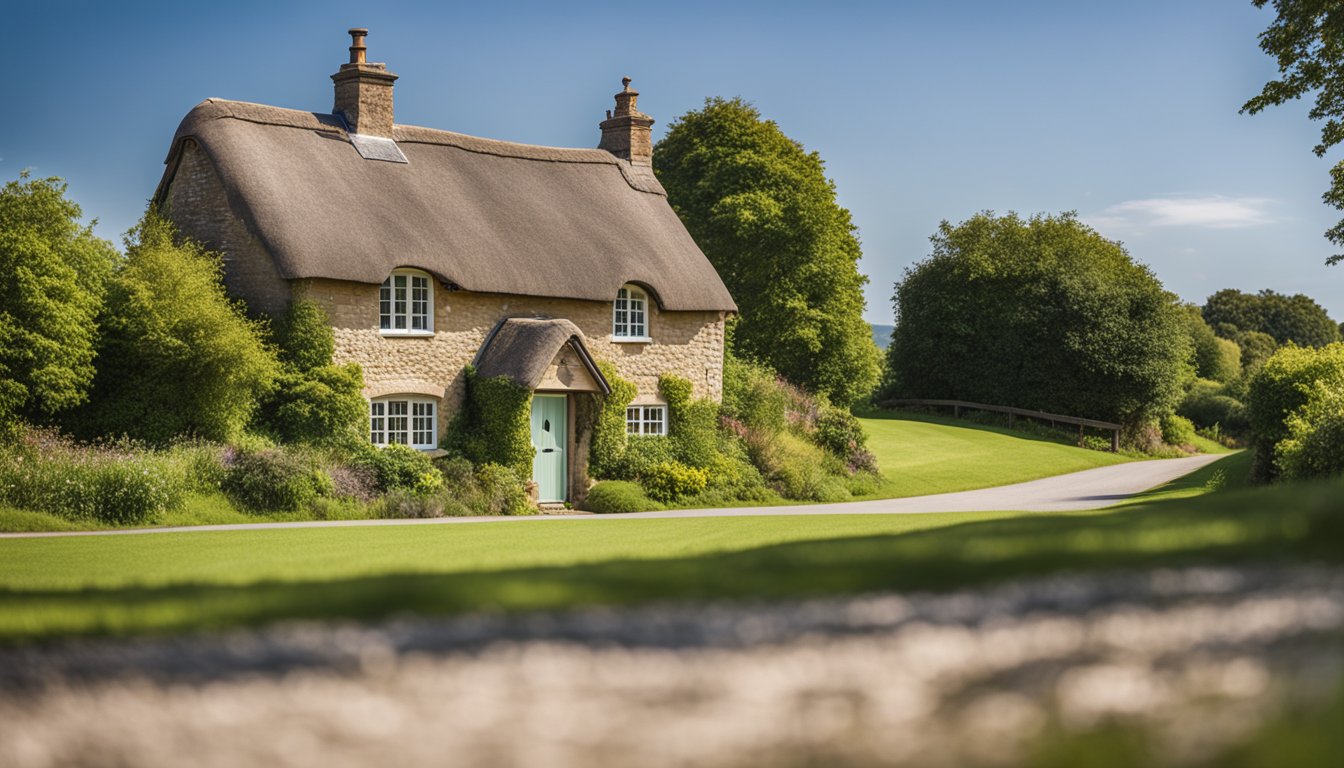Late updated: 20 Aug 2024 10:08
Written by: Oliver Bennett
Best Rural Broadband Routers In The UK: Top Choices for Reliable Connectivity
Choosing the best rural broadband router in the UK can significantly impact your internet experience, especially in remote areas where connectivity options are limited. A reliable router is essential to ensure a stable and fast internet connection even in the most underserved locations. With advancements in technology, even rural areas can now benefit from robust broadband solutions.

We've explored various options and have gathered insights on the most efficient routers that cater to rural broadband needs. From 4G routers like the TP-Link Archer MR600 V2, used widely by National Broadband, to full-fibre options from providers like Vodafone, there are several excellent choices available to suit different requirements and budgets.
By investing in the right router, we can take full advantage of government-supported initiatives and private investments focused on enhancing rural broadband access across the UK. This guide aims to highlight the top picks to help us make an informed decision and enjoy seamless internet connectivity in rural settings.
Key Takeaways
- Reliable routers enhance rural broadband connectivity
- Multiple robust options cater to different budgets and needs
- Investment in the right equipment can improve internet performance
Evaluating Broadband Options for Rural Areas
Selecting the best broadband options for rural areas can be challenging due to the varied availability of broadband technologies and infrastructure. We will explore the different broadband technologies, assess specific demands of rural homes, and consider infrastructure and availability factors.
Understanding Different Broadband Technologies
Broadband choices can primarily be categorised into fibre, wireless, and satellite options. Fibre broadband, such as that provided by Openreach, offers high speeds and reliability but requires significant infrastructure. Full fibre (FTTP) gives the fastest connections but is less common in rural locations.
Wireless broadband includes fixed wireless and mobile broadband (4G, 5G). These options use radio signals rather than cables, making them suitable for remote areas with less infrastructure. Satellite broadband provides slower speeds but is available almost anywhere.
Broadband deals vary widely, offering differing download speeds (e.g., 30Mbps, 10Mbps). Each technology option has unique strengths and weaknesses.
Assessing Broadband Needs and Demand in Rural Homes
Understanding the specific needs of rural households is critical to selecting the right broadband. A family streaming HD videos will require higher broadband speed than someone using the internet primarily for browsing. Evaluating demand upfront avoids future frustration with slow speeds.
We should consider how many devices will connect simultaneously. Homes engaged in activities like video conferencing or online gaming need robust speeds and low latency. For instance, 10Mbps may suffice for light browsing, but we recommend at least 30Mbps for more demanding use.
Availability and Infrastructure Considerations
Infrastructure varies significantly across rural areas. One main factor is the distance from the nearest exchange or street cabinet. The further away, the harder it becomes to maintain higher speeds. Fixed-line broadband may be limited in such scenarios.
Fixed wireless broadband and wireless routers circumvent the need for extensive infrastructure, relying instead on signal availability. Mobile broadband (4G and 5G) can also provide viable alternatives where fixed networks are scarce.
The presence of providers like Openreach influences the availability of fibre broadband. It's vital to check local availability and compare the best broadband deal for your specific location.
In rural areas, it's essential to balance the need for speed with the existing infrastructure and available technology to ensure a reliable and effective broadband service.
Top Recommended Rural Broadband Routers

When considering the best broadband routers for rural UK areas, it's crucial to evaluate their features, specific models, and how well they perform in remote locations. Let us explore these aspects in detail.
Features and Advantages of Leading Routers
For an optimal experience, routers should support at least 100Mbps speeds, which is essential for streaming and other high-bandwidth activities. Wi-Fi 6 technology is a valuable feature, offering faster speeds and better efficiency in crowded networks.
Dual-band wireless channels (2.4GHz and 5GHz) enhance flexibility and performance. The 2.4GHz band provides greater range, ideal for larger rural homes, while the 5GHz band offers faster speeds but shorter range, excellent for urban areas where interference is more common.
Security standards are another critical feature. Look for routers supporting WPA2 or the newer WPA3, which offer more robust protection for your wireless network. Additionally, more ethernet ports allow for wired connections to multiple devices, beneficial for those with several gadgets needing a stable connection.
Specific Router Models and Their Providers
When evaluating routers available from major providers, several models stand out. The BT Smart Hub 2 is highly regarded for its strong Wi-Fi performance and extensive coverage. Equipped with advanced features, it's chosen by many for its reliability.
The Sky Max Hub and Virgin Media Hub 5 also offer robust features, including excellent security and multiple ethernet ports. Both models support dual-band wireless channels and are suitable for various household needs.
EE's 4GEE Home Router is designed for areas lacking fixed-line broadband, using 4G technology to provide wireless broadband. It’s particularly useful for rural home users relying on mobile data. Three's 5G Home Broadband is another noteworthy option, offering some of the fastest connections available for rural areas.
Performance in Rural Environments
Rural environments pose unique challenges such as large distances between network nodes and potential interference from natural obstacles. Routers like the aforementioned BT Smart Hub 2 and Virgin Media Hub 5 perform reliably, even in remote locations.
With Wi-Fi 6 support, these routers handle multiple devices simultaneously without significant performance drops. Similarly, the 4GEE Home Router excels in delivering internet via mobile data, filling gaps where traditional broadband services falter.
Connection quality and stability are paramount. Ethernet ports in these routers provide consistent, wired internet access, and their advanced wireless capabilities ensure smooth performance, even in challenging conditions. These make them top choices for those needing high-speed internet in the countryside.
Frequently Asked Questions

In this section, we address some of the most commonly asked questions regarding the best broadband routers for rural UK areas, with a focus on specific needs like online gaming, extensive home coverage, and handling multiple devices.
What are the top choices for broadband routers in rural UK areas?
For rural UK areas, routers like the ASUS RT-AX88U and the Netgear Nighthawk series stand out. These routers offer reliable performance and extensive coverage, essential for broader rural settings. They support high-speed connections and ensure a stable internet experience even in less densely populated areas.
Which routers offer the best performance for online gaming in remote locations?
For online gaming, low latency is crucial. Routers such as the TP-Link Archer C5400X and the ASUS ROG Rapture GT-AX11000 provide excellent gaming features. They include QoS (Quality of Service) settings to prioritise gaming traffic, reducing lag and ensuring smoother gameplay.
Which wireless router is considered the best for extensive homes?
In extensive homes, coverage can be an issue. Mesh systems like the Netgear Orbi and the Google Nest WiFi are ideal. These systems use multiple nodes to spread the signal throughout the house, ensuring that there are no dead zones and providing seamless WiFi coverage from room to room.
How can one ensure optimal broadband reception in remote UK regions?
Optimal reception in remote regions relies on the combination of a high-quality router and strategic placement. Position the router centrally and elevate it if possible. Additional range extenders or a mesh WiFi system can further enhance the signal by eliminating weak spots.
What considerations should be made when purchasing a broadband router in 2024?
In 2024, it’s essential to look for WiFi 6 compatibility for better performance and future-proofing. Consider the number of devices that will be connected and ensure the router has ample RAM and a fast processor. Security features like WPA3 encryption are also vital to protect against cyber threats.
How does one choose a WiFi router that can handle multiple devices simultaneously?
For handling multiple devices, routers with MU-MIMO (Multi-User, Multiple-Input, Multiple-Output) technology are key. Routers such as the Linksys EA9500 and the ASUS RT-AX92U support MU-MIMO and can efficiently manage multiple simultaneous connections, ensuring that all devices get adequate bandwidth without compromising performance.
